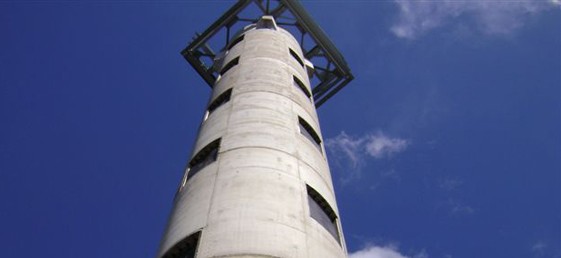Monroe, MI
Detroit Edison Power Plant
DTE Monroe Power Plant was originally constructed from 1971 to 1974. It has 4 coal fired generators and is the largest DTE generating facility @ 3,000 megawatt. It is the 2nd largest power plant in Midwest.
The purpose for the construction of the Limestone Lowering Well evolved from the need for DTE to reduce the amount of Sulfur Dioxide-SO2 gas emissions which is produced by coal combustions plants. The resolution to this problem is the production of Flue Gas Desulfurization Systems (FGD). The 1990 Clean Air Act mandated reduction of power plant SO2 emissions. The 2005 Clean Air Interstate Rule (CAIR) – Cap SO2 emissions in 28 Eastern States that contribute to unhealthy levels in downwind states. CAIR – Reduce SO2 emissions by 70% and NOx emissions by over 60% from 2003 levels. SO2 emissions contribute to acid rain and respiratory problems caused by fine airborne particulates.
Best Demonstrated Available Technology (BDAT) for reducing SO2 emissions is a wet scrubber FGD System. Crushed limestone is introduced in spray form into the exhaust gas system of a coal-fired boiler. Limestone reacts with SO2 producing liquid form calcium sulfite. Monroe’s FGDs are designed to recycle the waste sludge. Calcium sulfite (CaSO3) is converted to calcium sulfate (CaSO4) using forced oxidation. The by-product is high quality gypsum, for use in drywall.
The Limestone Lowering well is 110 ft. tall, and has a 9 ft. inside diameter, 18″ thick walls, and is heavily reinforced with solid steel frame openings. The challenges of construction were to design a mix that would freely flow around the heavily reinforced areas to the openings without vibration. The specified 28 day strength was 4000 psi however Barton Malow needed 3000 psi overnight in order to strip and recycle forms more quickly. The formwork was designed by USA Form, Inc in Chicago IL. They were designed to hold up to full liquid head with pour heights of 16 feet. The forms were a custom round design and made to be cycled vertically. Included were safety features for working on heights up to 120 feet.
Barton Malow requested that Messina Concrete work with Premiere Concrete Admixtures to facilitate the design of a Self Consolidating Concrete Mix that could provide them all the necessary performance characteristics. Barton Malow wanted to complete the project ahead of schedule with an architectural pleasing finish. In addition Barton Malow worked closely with Premiere on developing the proper placement procedures. The SCC Mix consisted of 30% fly ash with a blend of aggregates. ConAir®, air entrainment was dosed to achieve 7% air, OptiFlo® 100R for extended pot life, and UltraFlo DP, High range polycarboxolate water reducer to obtain workability and flow, a viscosity modifier was not required. Premiere worked closely with SME to develop testing procedures that met the engineer’s requirements. Spreads were targeted for 26″ – 30″.




